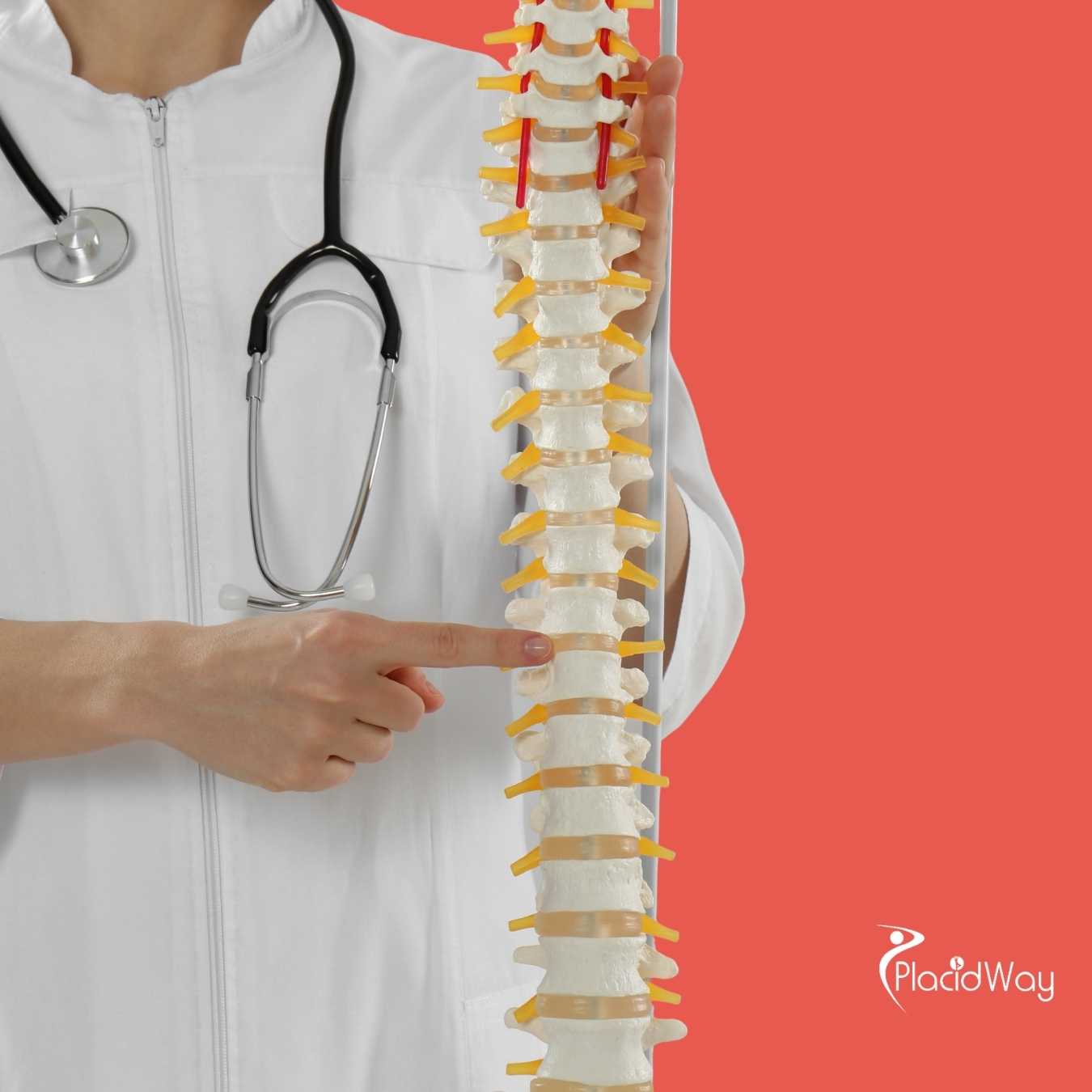Regenerating Ovaries with Stem Cells — The Future of Fertility Medicine
.png)
Hello there! Have you ever wondered if science could offer a revolutionary solution to challenges in female fertility, like regenerating ovaries? It's a question that many individuals and couples facing fertility issues, especially those dealing with conditions like premature ovarian insufficiency or age-related ovarian decline, often ponder. The idea of using stem cells to regrow ovaries might sound like something out of a science fiction novel, but it's a field brimming with fascinating research and significant hope for the future of reproductive medicine.
In simple terms, the answer to "can stem cells regrow ovaries?" is not a straightforward 'yes' or 'no' yet. However, the scientific community is making remarkable strides. Researchers are actively investigating how different types of stem cells can be harnessed to repair, rejuvenate, or even rebuild ovarian tissue, potentially restoring hormonal balance and the ability to produce viable eggs. This blog post will delve into the exciting world of ovarian regeneration using stem cells, exploring the current scientific understanding, potential applications, and what this could mean for individuals seeking to improve their fertility prospects.
Can Stem Cells Regrow Ovaries?
The concept of using stem cells to regrow ovaries is one of the most exciting frontiers in reproductive medicine. While we're not at a point where a non-functional ovary can be completely replaced with a new, lab-grown one, significant progress is being made in using stem cells to repair existing ovarian tissue, enhance its function, and even stimulate the formation of new egg-producing follicles. This offers hope for women suffering from conditions that lead to diminished ovarian reserve or premature ovarian failure.
Scientists are exploring various types of stem cells, including mesenchymal stem cells (MSCs) and induced pluripotent stem cells (iPSCs), for their potential in ovarian regeneration. These cells possess unique properties: MSCs can differentiate into various cell types and secrete growth factors that support tissue repair, while iPSCs can be reprogrammed to become any cell type, including ovarian cells. The goal is to create a healthier ovarian microenvironment, reduce inflammation, and encourage the growth of new, healthy follicles, thereby improving the chances of natural conception or successful assisted reproductive technologies.
What Exactly Are Stem Cells and How Do They Relate to Ovarian Function?
Stem cells are often called the body's raw materials. They are unspecialized cells that have two key characteristics: first, they can renew themselves through cell division, potentially for long periods; and second, under specific physiological or experimental conditions, they can be induced to become specialized cells with specific functions, such as blood cells, heart muscle cells, or nerve cells. This incredible versatility makes them invaluable for regenerative medicine.
In the context of ovarian function, scientists believe that endogenous ovarian stem cells naturally exist within the ovary and play a role in its ongoing maintenance, though their precise role and abundance are still under investigation. Furthermore, exogenous stem cells (from other parts of the body or lab-grown) can be introduced to aid in ovarian rejuvenation. These cells can help in several ways:
- Tissue Repair: They can differentiate into ovarian cells, replacing damaged ones.
- Growth Factor Secretion: They release molecules that promote the growth and survival of existing ovarian cells and follicles.
- Immunomodulation: They can reduce inflammation, which is often a factor in ovarian damage.
- Angiogenesis: They can stimulate the formation of new blood vessels, improving blood supply to the ovaries.
What is the Current Scientific Standpoint on Stem Cell Therapy for Ovaries?
Globally, scientific research into stem cell therapy for ovaries is advancing rapidly. The focus is primarily on understanding the mechanisms by which stem cells can influence ovarian health and translating these findings into safe and effective treatments. While initial results from animal models have been very encouraging, showing improved ovarian function, increased follicle counts, and even successful pregnancies, human studies are still in their nascent stages.
Most human applications of stem cells for ovarian rejuvenation are currently part of controlled clinical trials. Researchers are meticulously studying the safety, optimal dosage, delivery methods, and long-term efficacy of different stem cell types. The scientific community emphasizes caution and rigorous testing before widespread clinical use, ensuring that potential benefits outweigh any risks. The goal is not just to see if stem cells can regrow ovaries, but to develop a therapy that is consistently safe and effective for patients seeking to restore their fertility.
What Conditions Could Potentially Benefit from Ovarian Stem Cell Therapy?
The applications for successful ovarian stem cell therapy could be transformative for a wide range of fertility challenges. Here are some key conditions that researchers believe could potentially benefit:
- Premature Ovarian Insufficiency (POI): Also known as premature ovarian failure, this condition involves the loss of normal ovarian function before age 40. Stem cells could potentially reactivate dormant follicles or create new ones.
- Diminished Ovarian Reserve (DOR): Whether due to age, genetics, or environmental factors, DOR leads to fewer and lower-quality eggs. Ovarian rejuvenation via stem cells could improve egg quantity and quality.
- Ovarian Damage from Medical Treatments: Cancer treatments like chemotherapy and radiation can severely harm ovarian function. Stem cells might help repair this damage or restore function post-treatment.
- Certain Forms of Polycystic Ovary Syndrome (PCOS): While PCOS is complex, some aspects related to ovarian microenvironment and inflammation might be addressed by stem cell therapies.
- Age-Related Infertility: As women age, ovarian function naturally declines. Stem cell therapy could potentially extend reproductive lifespan by revitalizing aging ovaries.
The hope is that by improving the health and functionality of the ovaries, these treatments could increase the chances of natural conception or improve success rates for in-vitro fertilization (IVF).
Are There Any Clinical Trials for Ovarian Regeneration Using Stem Cells?
Indeed, there are various clinical trials currently active worldwide, exploring the potential of stem cells to regenerate ovaries. These trials are crucial for moving from laboratory research to approved clinical treatments. They are designed to rigorously test the safety and efficacy of different stem cell types and delivery methods in human patients.
Participants in these trials often include women diagnosed with conditions such as Premature Ovarian Insufficiency or those with significantly diminished ovarian reserve. The trials aim to monitor various outcomes, including:
- Changes in hormone levels (e.g., FSH, AMH, estradiol)
- Antral follicle count (AFC)
- Resumption of menstruation
- Improvement in ovulation
- Pregnancy rates
- Overall safety and any adverse effects of the therapy.
It's important for individuals considering these treatments to seek out information about legitimate, registered clinical trials, as opposed to unproven therapies offered by unregulated clinics. Reputable trials are listed on platforms like ClinicalTrials.gov and are conducted under strict ethical and scientific guidelines.
What Are the Potential Benefits of Ovarian Stem Cell Therapy?
If successful, ovarian stem cell therapy could offer a range of significant benefits for women struggling with infertility or hormonal imbalances due to ovarian dysfunction. These benefits extend beyond just the ability to conceive, impacting overall health and well-being.
Key potential benefits include:
- Restoration of Fertility: This is the primary goal for many, aiming to increase the chances of natural conception or improve success rates with IVF by producing more viable eggs.
- Improved Ovarian Function: Beyond just eggs, healthy ovaries produce essential hormones (estrogen, progesterone) that impact bone health, cardiovascular health, and cognitive function. Stem cell therapy could restore this crucial hormonal balance.
- Delayed Menopause Symptoms: For women experiencing premature ovarian insufficiency, therapy could alleviate symptoms like hot flashes, night sweats, and mood swings.
- Reduced Need for Hormone Replacement Therapy (HRT): By restoring endogenous hormone production, some women might reduce or eliminate their need for external hormone supplementation.
- Potential for Autologous Treatment: In some cases, a woman's own stem cells (autologous) can be used, minimizing the risk of rejection.
These potential benefits highlight why so much research is dedicated to seeing if stem cells can regrow ovaries and restore their vital functions.
What Are the Risks and Ethical Considerations of Ovarian Stem Cell Therapy?
Like any advanced medical procedure, ovarian stem cell therapy, particularly in its experimental stages, carries potential risks and raises important ethical questions. It's crucial for patients to be fully informed about these aspects before considering any such treatment.
Potential Risks:
| Risk Category | Description |
|---|---|
| Infection | As with any invasive procedure, there's a risk of infection at the injection site or internal infection. |
| Immune Rejection | If allogeneic (donor) stem cells are used, there's a risk of the recipient's immune system rejecting them. |
| Tumor Formation | Especially with pluripotent stem cells, there's a theoretical risk of uncontrolled cell growth leading to tumor formation (teratomas). |
| Unforeseen Effects | Long-term side effects or impacts on genetics and future generations are still largely unknown. |
| Ineffectiveness | The therapy might simply not work for all individuals, leading to disappointment and financial strain. |
Ethical Considerations:
- Source of Stem Cells: Debates surrounding embryonic stem cells versus adult or induced pluripotent stem cells.
- Unproven Therapies: The marketing of unproven or experimental therapies outside of regulated clinical trials raises serious ethical concerns about patient exploitation.
- Patient Expectations: Ensuring patients have realistic expectations about the outcomes, given the experimental nature of the treatment.
- Safety and Regulation: The need for stringent regulatory oversight to ensure patient safety and ethical conduct of research.
How Much Does Stem Cell Therapy for Ovaries Cost in Medical Tourism Destinations?
For those considering stem cell therapy for ovaries, medical tourism offers an alternative, often with lower costs than in Western countries. However, it's crucial to approach this option with due diligence, as the regulatory landscape and standards of care can vary significantly. The cost is a major factor, and it's not a one-size-fits-all figure.
Factors influencing the cost include:
- Country and Clinic: Countries like Mexico, Panama, India, and some parts of Europe are known for offering various stem cell therapies, often at a fraction of the cost in the USA or Canada. However, prices vary greatly between clinics even within the same country.
- Type of Stem Cells: The source (e.g., adipose-derived, bone marrow-derived, umbilical cord blood) and processing of the stem cells will impact the price.
- Number of Treatments: Often, more than one treatment cycle may be recommended, increasing the overall cost.
- Associated Services: This might include diagnostics, follow-up care, accommodation, and travel, all of which contribute to the total expense.
Patients should always request a detailed breakdown of costs and ensure that the quoted price covers all aspects of the treatment plan. While the appeal of lower costs for ovarian regeneration is strong, the primary focus should remain on safety, ethical practices, and the credibility of the medical facility.
Which Countries Are Leading in Stem Cell Therapy Research for Ovarian Regeneration?
When considering where to seek advanced treatments like stem cell therapy for ovaries, it's important to differentiate between research hubs and clinics offering unproven therapies. Leading countries in this field are characterized by robust scientific infrastructure, ethical review boards, and active engagement in clinical trials.
Prominent countries include:
- United States: Home to numerous universities, research institutions, and biotech companies, the U.S. has a high volume of registered clinical trials for various stem cell applications, including those targeting reproductive health and ovarian regeneration.
- Japan: Known for its progressive stance on regenerative medicine, Japan has significant investments in stem cell research, particularly with induced pluripotent stem cells (iPSCs), which hold great promise for ovarian rejuvenation.
- European Union (EU): Countries like the UK, Spain, and Germany have strong regulatory frameworks and active research programs in regenerative medicine.
- China: With substantial government investment, China has a vast number of ongoing clinical trials in stem cell research, though regulatory oversight can sometimes vary.
- South Korea: A rising power in biotechnology and stem cell research, particularly in areas like aesthetic and anti-aging treatments, which often overlap with regenerative medicine for conditions like premature ovarian insufficiency.
While other countries may offer treatments, these nations generally represent the forefront of legitimate scientific advancement and regulated clinical application in stem cells regrow ovaries research.
How Can I Find a Reputable Clinic for Ovarian Stem Cell Therapy Abroad?
Choosing a reputable clinic, especially for an experimental and complex treatment like stem cell therapy for ovaries, requires careful consideration. When looking abroad, the stakes are even higher due to differing regulations and standards. Here’s how to ensure you make an informed decision:
- Verify Accreditation and Licensing: Look for clinics accredited by international bodies (e.g., JCI, ISO) or recognized by their national health authorities. This indicates adherence to certain quality and safety standards.
- Research Doctor Qualifications: Ensure the medical professionals involved are highly qualified, board-certified in reproductive endocrinology or regenerative medicine, and have specific experience with stem cell applications.
- Inquire About Clinical Trials: A reputable clinic will either be part of a legitimate, registered clinical trial or will be transparent about offering an experimental treatment and clearly outline the risks and benefits. Be wary of clinics promising guaranteed cures.
- Request Detailed Treatment Protocols: Ask for a comprehensive explanation of the type of stem cells used, the source, processing methods, administration route, and expected outcomes.
- Check for Patient Testimonials and Reviews: While not definitive, positive and consistent feedback from other patients can provide insight. Be cautious of overly enthusiastic or generic testimonials.
- Transparency in Pricing: A reputable clinic will provide a clear, itemized breakdown of costs, avoiding hidden fees.
- Consultation Process: A good clinic will offer a thorough initial consultation, including a review of your medical history, to determine if you are a suitable candidate.
Always prioritize safety and evidence-based medicine. When considering if stem cells can regrow ovaries for you, ensure you are working with experts who are committed to ethical practice and patient well-being.
If you're exploring advanced fertility treatments, including innovative options like ovarian stem cell therapy, and considering medical tourism, PlacidWay can help you navigate the complex landscape. We connect patients with internationally accredited clinics and experienced specialists worldwide, offering guidance and support to find solutions related to healthcare services and medical tourism that meet your specific needs. Explore your options with PlacidWay today for trusted information and access to global medical expertise.


.png)



-Package-in-Kuala-Lumpur,-Malaysia-by-FirstCell.jpg)





Share this listing